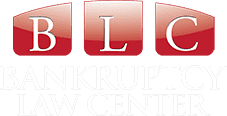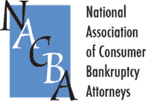Many industry experts are expecting that bankruptcies will increase in 2022. The COVID-19 pandemic and the expiration of the eviction moratorium are expected to increase bankruptcy filings in the first quarter of 2022. Mortgage companies that were previously barred from foreclosing on homeowners now have the green light to begin the foreclosure process. However, they cannot foreclose unless the homeowner has been behind on payments for at least 120 days. When Americans can no longer pay their mortgage and face foreclosure, they may file for chapter 7 or 13 bankruptcy. If you are one of the many San Diego residents considering filing for bankruptcy, it is important that you understand what to expect when filing for bankruptcy in 2022.
Consider All of Your Options Before Filing for Bankruptcy
Before filing for bankruptcy, we recommend considering all of your alternatives. Bankruptcy can be one of the most effective tools to eliminate your debt and help you begin your new financial future. However, depending on your unique case, other options may work better for you right now. For example, you may qualify for a mortgage loan forbearance program or another government initiative that can help you obtain relief while you stabilize your financial situation.
Sometimes people will take a loan from their 401K instead of filing for bankruptcy, but most experts only recommend this as a last resort. In other cases, an attorney may be able to negotiate with your creditors to develop a payment plan or to dismiss the debt against you entirely. An attorney can also help you prolong the foreclosure process to give you more time to find new housing in many cases. Before you file for bankruptcy, we recommend discussing your case with an attorney to understand all of your options and choose the best one for your situation.
Understand the Difference Between Chapter 7 and Chapter 13 Bankruptcy
After you have decided that filing for bankruptcy is the best option for you, you will need to decide which type of bankruptcy will help you the most. There are two main types of bankruptcy for individuals, chapter 7 and chapter 13. Chapter 7 bankruptcy is also called litigation bankruptcy. It is simpler to file than chapter 13 bankruptcy and takes less time to complete. After filing for chapter 7 bankruptcy, you will be assigned a bankruptcy trustee. The trustee will sell or liquidate your non-exempt assets to pay for your debts. You will need to qualify for a chapter 7 bankruptcy by passing the means test.
If your income is low enough, you will be able to file for chapter 7 bankruptcy. People who have enough money to pay their debts to repay their debts through a repayment plan and do not pass the means test can file for a chapter 13 bankruptcy. Your bankruptcy trustee will work with you to create a three-to-five year plan. You will make monthly payments toward your debt and at the end of the process, your debt will be discharged. Filing for chapter 13 bankruptcy is a good option if you are falling behind on your car payment or house payment and want to catch up on missed payments while keeping your property.
Do Not Drain Your Retirement Account
Filing for bankruptcy can feel like an intimidating process. Bankruptcy has a stigma that comes with it, prompting many to avoid it at all costs. It can be tempting to read your savings or retirement account as a way to prolong filing for bankruptcy. It can also be tempting to go on a spending spree or rack up new debt two to three months before you file for bankruptcy. Keep in mind that your creditors can object to your request to have this debt discharged based on bankruptcy fraud.
In other words, you could face penalties for spending excessive money before you file for bankruptcy, and the debt may not be discharged. It is also important to understand that most retirement accounts are protected from bankruptcy. It does not make sense to drain your retirement accounts that will be protected from the bankruptcy process when the majority of your debt will be wiped out after the bankruptcy anyway.
Bankruptcy Will Not Eliminate All of Your Debt
You may not be able to eliminate all of your debt while going through a bankruptcy. For example, child support, alimony, and taxes cannot be discharged through the bankruptcy process. Many people consider filing for bankruptcy because of their student loans. Unless you can prove undue hardship, your student loans will not be discharged after the bankruptcy is finalized. The type of debt also matters. For example, most unsecured debt can be wiped out in bankruptcy, such as credit card bills and medical bills. With secured debt, such as your mortgage and your vehicle, your creditor can take the collateral like your home or vehicle.
Understand Whether You Will be Able to Keep Your Car and Vehicle
Many people considering filing for bankruptcy are understandably concerned that they will lose their home and vehicle. When filing for bankruptcy, you are allowed to keep certain property that is considered exempt. For example, you can keep a certain amount of equity in your home. If you file for chapter 13 bankruptcy, you will be able to keep your property, but you will have to pay creditors on a monthly basis for the value of any of your non-exempt property. If you file for chapter 7 bankruptcy, your bankruptcy trustee will be able to sell your non-exempt property to pay off your creditors. If you are not sure how much property you will be able to exempt or keep, we recommend discussing your case with an attorney.
Prepare to be Honest About Your Assets, Income, and Debt
When you file for bankruptcy, you will swear under oath that all the information you are providing is accurate and true to the best of your knowledge. Before you start the bankruptcy process, you must be honest with yourself and the bankruptcy court about all of your assets, income, and debt. Working with a bankruptcy attorney can help you ensure that your bankruptcy application and supplemental information are presented clearly and accurately.








